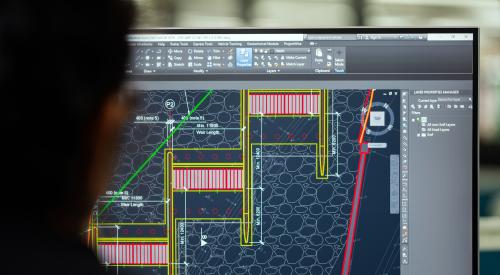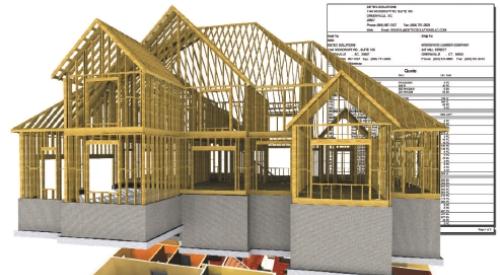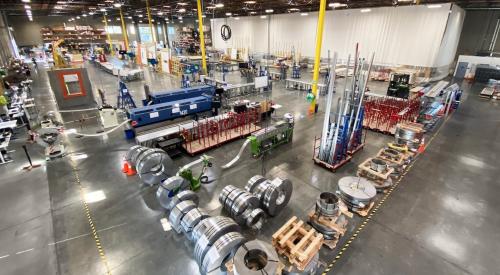Building information modeling (BIM) is a digital approach to designing buildings using computer-aided tools. BIM software yields several benefits, such as automating some aspects of the design process, enhancing collaboration, and delivering modern digital visualization features.
What’s Standing in the Way of BIM Modernizing the Housing Industry?
1. Cost Cutting and Risk Avoidance
Several factors have transformed the construction industry over the past few years, requiring businesses to look for ways to cut costs. The current environment is challenging for several reasons:
- Supply chain issues are causing the price of building materials to increase, on average by 8% in 2022.
- There is a skills gap in the construction industry. Many businesses face labor challenges and must spend more to train and retain employees.
- The price of land is increasing, with the average price per acre up by more than 12% in 2022 compared with 2021.
These factors are increasing costs for construction companies and reducing their profit margins. As a result, fewer funds are available to invest in digital innovation, and many businesses are unwilling to take risks in this environment.
RELATED
- How BIM Can Work for Small Builders
- TK Design: Masters of BIM for Production Housing [VIDEO]
- BIM for Home Builders
2. Insufficient IT Infrastructure
BIM adoption means moving some tasks and processes to a digital environment. Beyond investing in BIM software, many builders and developers would have to invest in upgrading their IT infrastructure to support new digital workflows.
Small and medium-size construction companies that specialize in residential or small multifamily projects may not have the necessary infrastructure to support BIM adoption and likely must invest in and provide:
- Cloud-based computing or in-house hardware to run CAD apps and related tools.
- A set of best practices for assigning tasks and sharing data in a digital environment.
- Cybersecurity to protect valuable data, including house plans and other designs that have value. For example, the average cost of a data breach now exceeds $4 million, which is a high price to pay.
- Access to a reliable data backup solution to enable efficient digital workflows.
Many executives perceive moving to the cloud and investing in digital infrastructure as too expensive or disruptive. There is also a lack of understanding of what adopting BIM entails when modernizing the current IT infrastructure.
3. Lack of Industry Standards
Some construction sectors are adopting BIM but relying on CAD tools, which isn’t a universal practice. Due to limited adoption, there are no widespread industry standards in construction for using BIM tools yet.
The lack of industry standards creates additional challenges for adopters. Prospective BIM users can feel overwhelmed by the different options available and struggle to choose the right building information modeling tool.
Plus, there are no standards regarding data formats or best practices for sharing data. Users can also encounter interoperability issues when working with partners that are using a different BIM tool.
Some construction sectors are adopting BIM but relying on CAD tools, which isn’t a universal practice. Due to limited adoption, there are no widespread industry standards in construction for using BIM tools yet.
Professionals with BIM software experience often learn how to use these tools by themselves, which means experienced users don’t share a set of industry standards.
These challenges can get in the way of adoption and incur additional costs until a company can develop internal standards for BIM software.
4. Lack of Vision
BIM adoption is more common among companies that work on large-scale construction projects in non-residential sectors. However, when it comes to single-family housing and multifamily builders and developers, 71% don’t feel BIM is relevant to their projects. They often feel that the projects they work on are too small to justify using CAD tools or they think the investment won’t unlock enough value.
That’s not an accurate perception of BIM. Digital design has several benefits, including reducing costs and speeding up project completion. Digital capabilities can also open new markets for small and medium firms.
Clients are also often unaware of the benefits of BIM and don’t seek construction firms that use BIM.
When it comes to single-family housing and multifamily builders and developers, 71% don’t feel BIM is relevant to their projects. However, that’s not an accurate perception of BIM.
BIM software companies have an essential role to play by reaching out to small and medium-size construction firms to show how the benefits of CAD tools apply to the residential and multifamily markets.
5. Limited Expertise
For CAD designers, employment opportunities will grow at an average pace of 8% per year in the near future as contractors and developers increasingly rely on digital design tools for their projects. However, few of these designers are gaining experience in the residential and multifamily construction industry due to the low rates of BIM adoption in these markets.
Finding experienced BIM designers is also challenging when most businesses in the construction industry are looking to reduce costs. As a result, home builders and developers must account for additional costs to provide industry-specific training to CAD/BIM professionals.
Limited IT expertise is another challenge to adopting BIM because small construction companies don’t have large enough in-house IT departments (if they have an IT department at all) to tackle challenges such as cybersecurity or data backup.
6. Lack of Government Incentive
The requirements that most non-residential contractors and developers confront to submit bids for publicly funded construction projects often drive change for the industry as a whole.
While small and medium-size construction firms specializing in residential construction typically don’t bid on public projects, they often follow industry trends and adopt new standards and best practices used by larger companies.
It stands to reason that government-funded projects, especially those that are federally funded, would support BIM adoption to help streamline costs, but the U.S. government currently does not require contractors to use BIM—despite the fact that countries such as the United Kingdom are seeing the positive effects of providing government incentives to spur BIM adoption.
Making building information modeling a requirement for public construction projects would help the technology (and the industry) mature. In addition, it could help BIM software companies adopt industrywide standards, resulting in more professionals gaining experience with BIM tools.
A mix of factors is currently standing in the way of BIM adoption for the housing industry. Between executives not seeing the value of BIM software and a lack of funds available for innovation, most residential construction firms working on privately funded projects aren’t thinking about BIM as a solution to enhance profitability.
However, early adopters can gain a competitive advantage, since BIM can help cut costs, resulting in shorter project completion times and yielding additional benefits.
Anna Liza Montenegro develops design technology conferences for the architecture, engineering, and construction (AEC) professionals as a forum for technology trends driving significant industry change.













